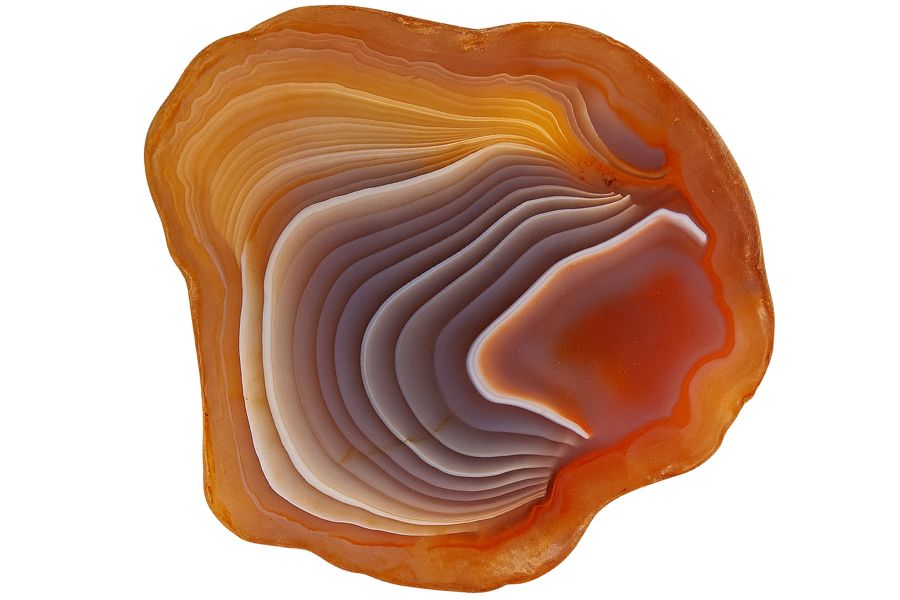Hunting for agates in Rhode Island connects you with a shoreline that’s always changing. Every storm or high tide stirs up new layers of gravel and brings fresh color to the surface.
Among the pebbles you’ll find bits of quartz and jasper, and if you’re lucky, a few true agates showing soft reds and whites. The thrill is in spotting one that stands out from the gray stones around it.
Focusing on the coves and river mouths where the water slows down will lead you to the best finds. With patience and sharp eyes, you can bring home a handful of Rhode Island agates that look like tiny pieces of sunset.
Once you figure out which beaches and streams tend to refresh their stone beds, you can build a colorful collection fast!
What is Rhode Island Agate?
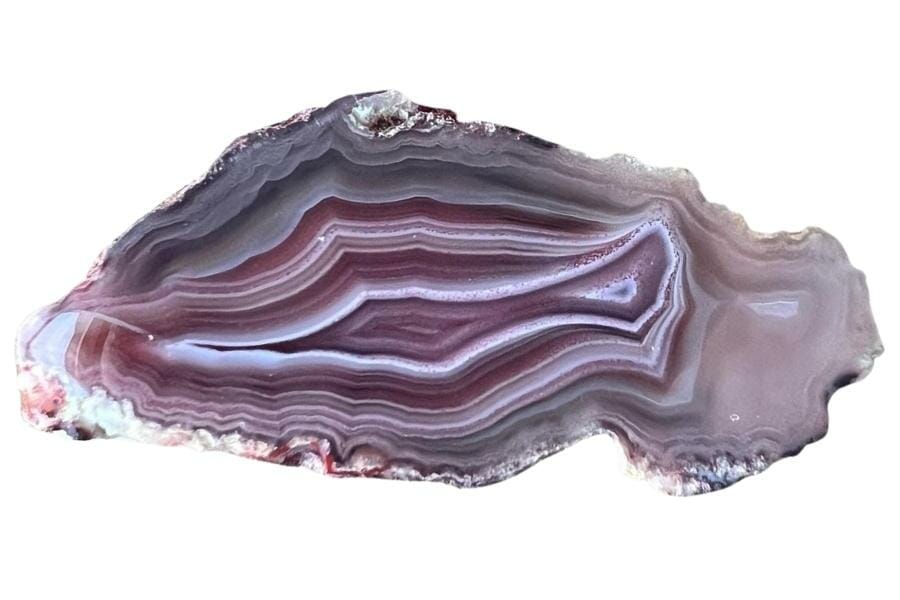
Agate is a cool rock that forms when layers of tiny quartz crystals stick together. These rocks aren’t like other rocks; they have different colors and patterns that make each one unique.
You’ll often find them in places with rocks formed by volcanoes or where there used to be a lot of volcanic activity. They can also be found in riverbeds where water has flowed for a long time, making the rocks tumble and smooth over time.
Amazingly, agates often form in rock holes, filling them like water in a bucket. Those cool bands of color we all love are made by different minerals seeping in over millions of years.
When looking for something, check out old volcanic areas or rivers. Remember that they can hide among ordinary pebbles, so keep your eyes open!
Read this to find out more about how much agates are worth.
Blue Lace Agate
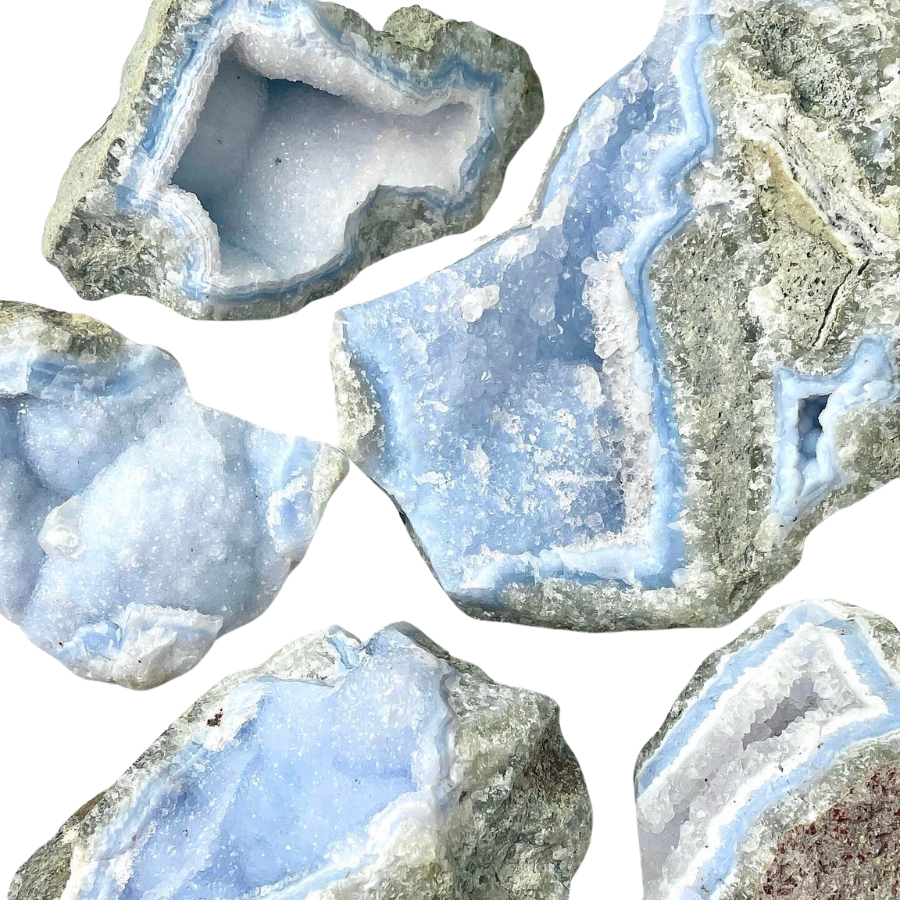
Blue lace agate is like the soft, sky-blue waves with lines that swirl and twist like delicate lace.
Its pattern comes from slow-forming layers of quartz, which create those beautiful, lace-like bands.
The bands of this agate type are often in shades of light blue, white, and sometimes a bit of grey. It’s different from other agates, which usually have more intense colors and stronger patterns.
The value of blue lace agate lies in its soft, tranquil look and the feeling of calm it brings. It’s often used in jewelry or as a decorative stone.
If you want REAL results finding incredible rocks and minerals you need one of these 👇👇👇
Finding the coolest rocks in isn’t luck, it's knowing what to look for. Thousands of your fellow rock hunters are already carrying Rock Chasing field guides. Maybe it's time you joined the community.
Lightweight, mud-proof, and packed with clear photos, it’s become the go-to tool for anyone interested discovering what’s hidden under our red dirt and what they've already found.
Join them, and make your next rockhounding trip actually pay off.
What makes it different:
- 📍 Find and identify 140 incredible crystals, rocks, gemstones, minerals, and geodes across the USA
- 🚙 Field-tested across America's rivers, ranchlands, mountains, and roadcuts
- 📘 Heavy duty laminated pages resist dust, sweat, and water
- 🧠 Zero fluff — just clear visuals and straight-to-the-point info
- ⭐ Rated 4.8★ by real collectors who actually use it in the field
Moss Agate

Instead of having the typical banding for which the different types of agates are known, moss agate has green inclusions that look like moss or trees.
These green patterns aren’t real plant material, though. They’re minerals like chlorite or iron oxide.
In some cultures, this type of agate is known as the “gardener’s stone” because of its green, plant-like appearance. It’s believed to help plants grow.
The price of moss agate can vary. It’s often quite affordable, but the more distinct and picturesque the green patterns, the more it might cost.
Fire Agate
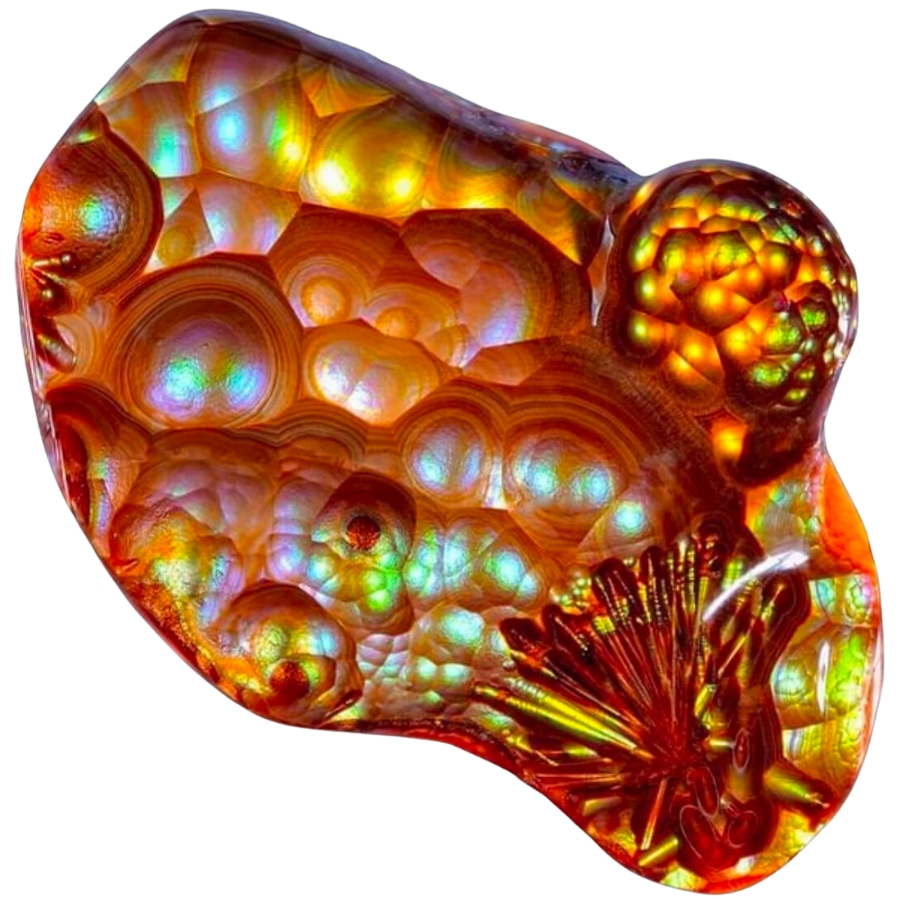
Fire agate is known for its incredible colors and the way it sparkles like fire. It’s got layers of silica and iron oxide that reflect light, creating a fiery effect.
When you look at fire agate, it’s like seeing flames trapped inside. Its colors can range from reds and oranges to greens and golds, all shimmering under the surface.
You might be wondering, “What is fire agate worth?” Well, its value comes from its rare beauty. The more color and sparkle, the more valuable the stone is.
Its fiery iridescence and lively play of color are used in jewelry pieces that are meant to stand out.
Dendritic Agate
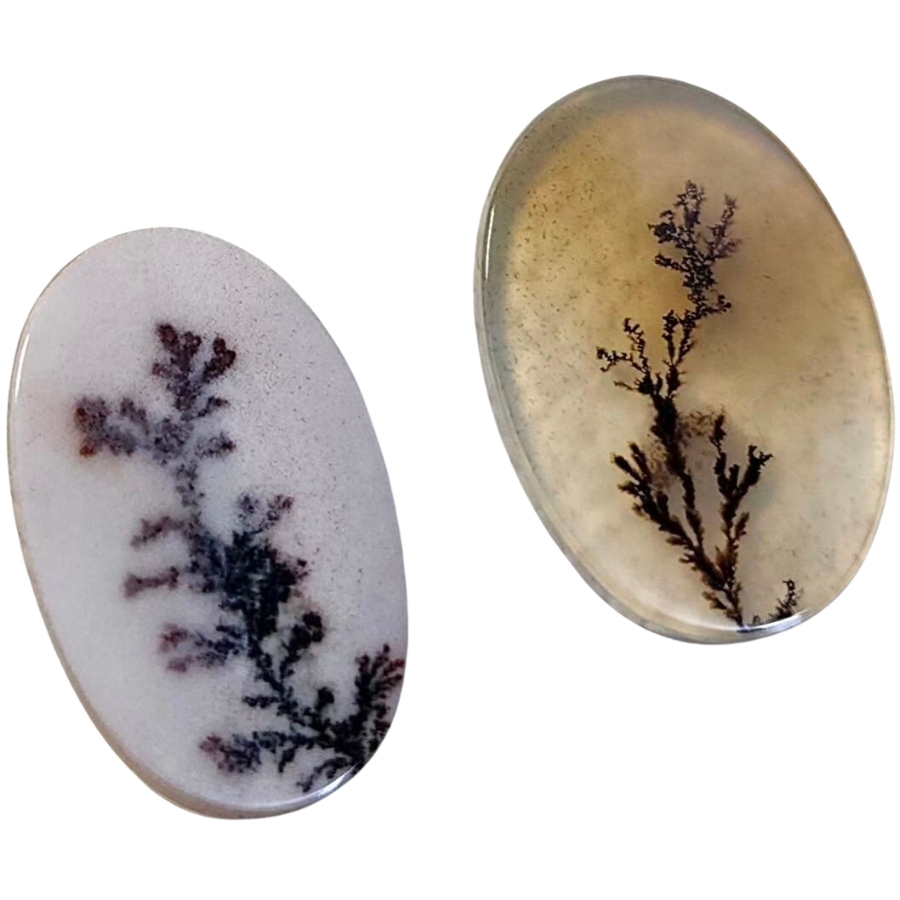
Dendritic agate is known for patterns that look like tiny trees or shrubs. Like moss agate, these patterns aren’t actual plants. They’re made of minerals, mostly manganese or iron oxides.
When you look at a dendritic agate, it’s like peering into a miniature forest or a frosty winter landscape.
The base of the stone is usually translucent to opaque, and the “dendrites”— those tree-like patterns— are often black or brown.
When it comes to how much dendritic agate is worth, it can vary. The more detailed and distinct the patterns are, the more it’s usually valued.
In some cultures, dendritic agate is believed to bring fullness and richness to life.
Crazy Lace Agate
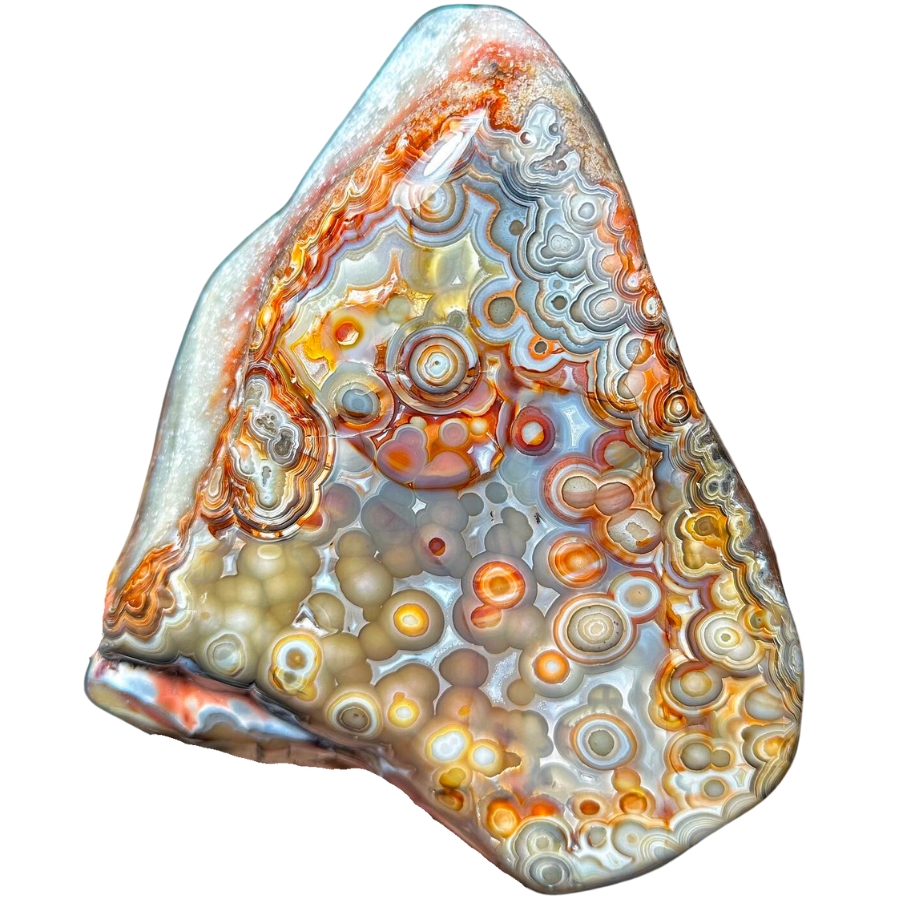
Crazy lace agate is like a party in a rock! It’s got swirls, circles, and all sorts of wild patterns dancing across it.
Its colors can be a mix of red, orange, yellow, and brown, and sometimes even a bit of gray or white.
What makes crazy lace agate stand out is its vibrant and complex patterns. No two pieces are the same. This distinctiveness is a big reason why it’s so valued.
Despite its wild and ‘crazy’ appearance, it’s sometimes called the “Laughter Stone” or “Happy Lace” because of the joy and positive vibes it’s believed to bring.
Laguna Agate
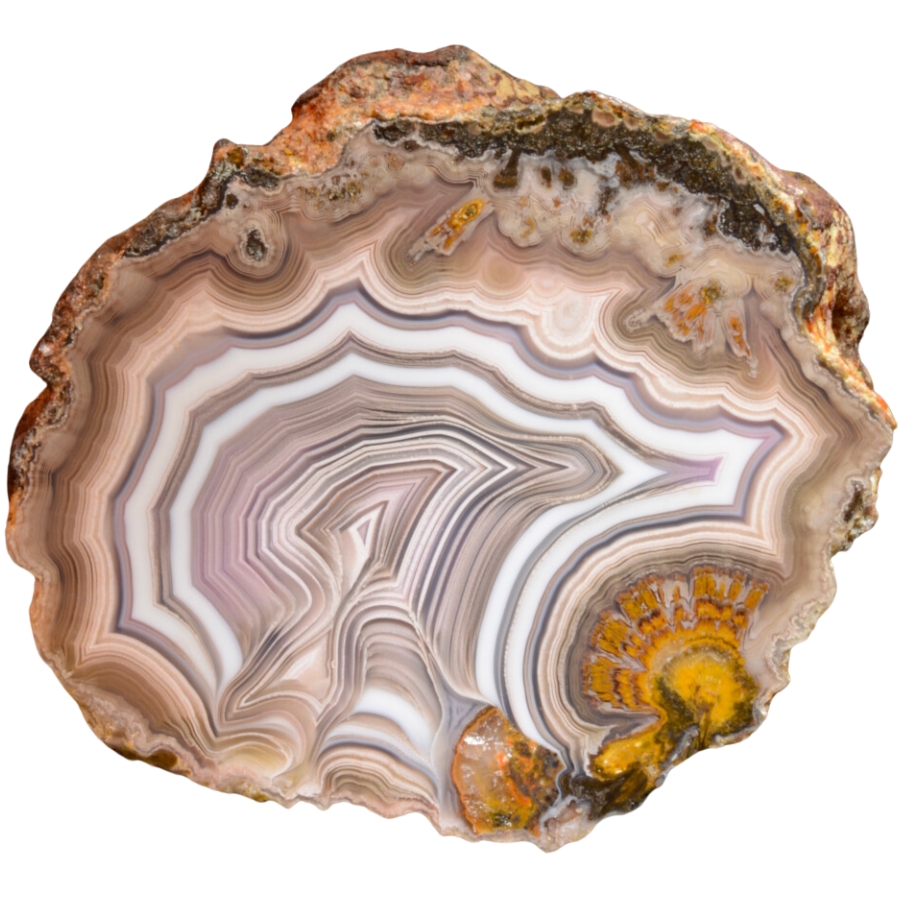
Laguna agate has incredibly sharp and fine banding. It has layers of red, orange, pink, yellow, and sometimes even purple and white all stacked in neat, tight bands.
These bands can form eye-catching patterns, like swirls, loops, and even landscapes.
The different colors of its bands come from various minerals present in the water at the time of its formation.
Laguna agate is considered one of the finest agates in the world due to its exceptional banding. This high regard among agate varieties makes it a prized possession for collectors.
Condor Agate
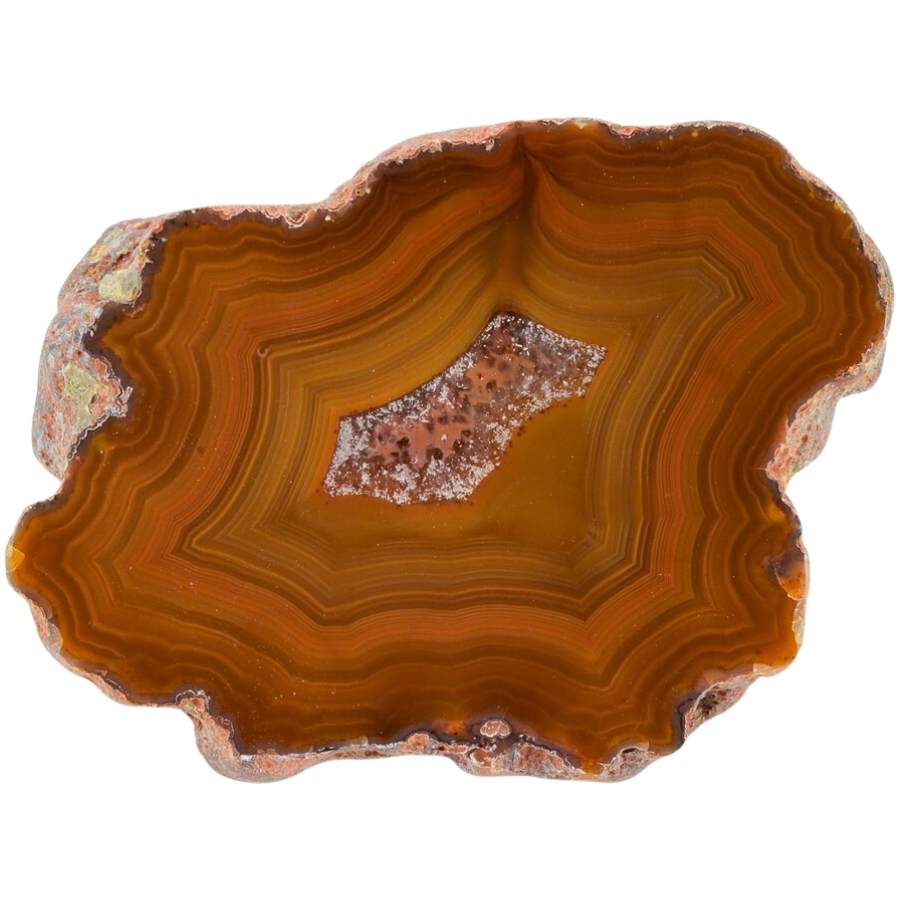
Condor agate is a real standout. It’s known for its bright, vivid colors and complex patterns.
It has reds, oranges, yellows, and sometimes even blues and greens all swirling together. These colors form in bands or in more random, artistic patterns.
The intensity and variety of its colors is what makes condor agate so special. It’s often used by artists and craftsmen who want to make a statement with their work.
Condor agate’s bold colors and patterns can turn a simple piece of jewelry or art into something really eye-catching.
Fortification Agate (Banded Agate)
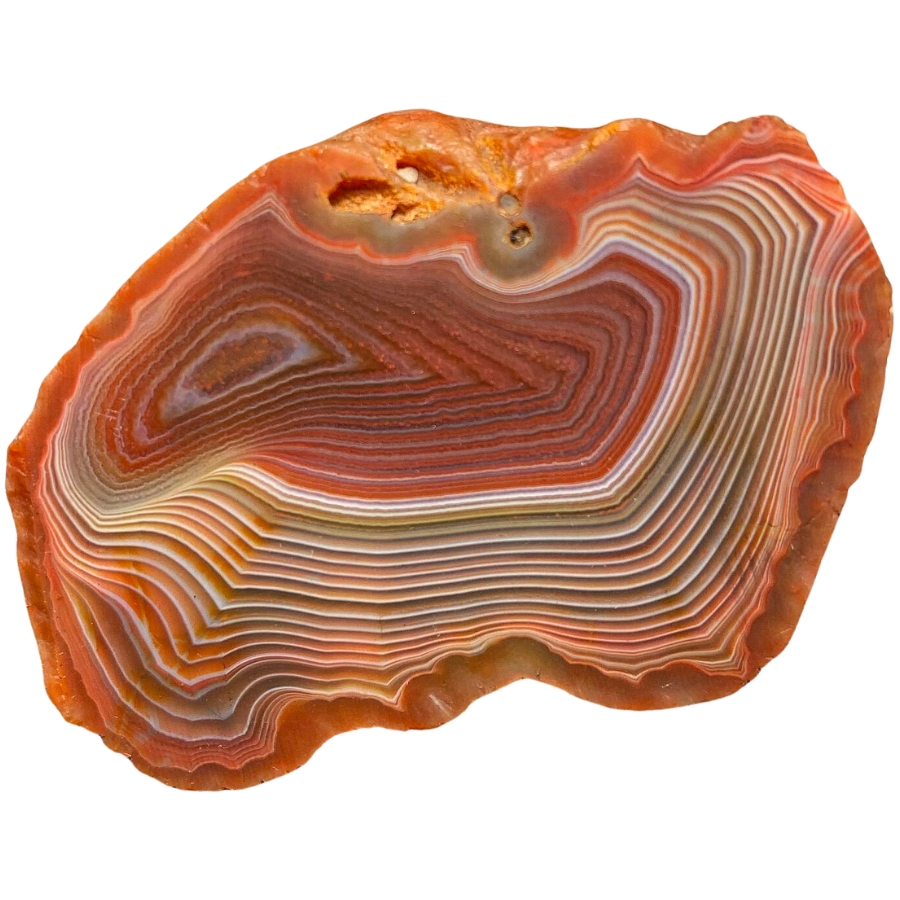
Fortification agate gets its name because the patterns inside it look like the aerial view of a fortified city.
Imagine seeing bands of color forming shapes that look like walls, with sharp angles and curves. They are usually in different colors, making each layer stand out.
If fortification agate is valuable, it’s because of its distinct patterns and colors. Its unique look makes it sought after for jewelry and as a collector’s item.
The clearer and more defined the patterns, the more valuable the stone can be. Some people also believe it can help with relaxation and calmness.
Iris Agate
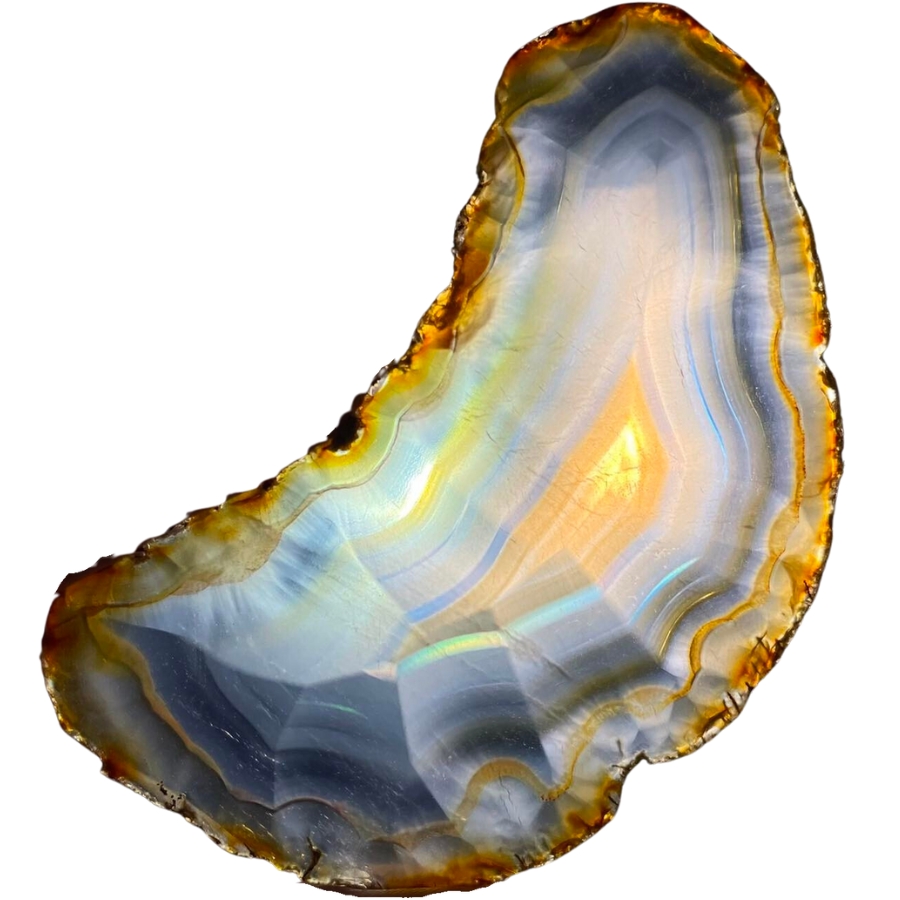
Iris agate looks like a regular agate at first, but when you hold it up to the light, something amazing happens. It shows all these rainbow colors, like light passing through a prism.
This is because it has very thin layers of silica, and when light hits these layers, it splits into all the colors of the rainbow.
The formation of iris agate is similar to other agates, but its layers are super thin, which is what creates the rainbow effect.
The value of iris agate comes from its unique ability to show these colors. In the past, people even used to think it had magical properties because of the way it showed colors. They saw it as a stone of good luck and wonder.
Plume Agate

Plume agate gets its name from its patterns that look like soft, feathery plumes. These plumes can be in all sorts of colors: red, black, green, or yellow, set against a translucent or opaque background.
The way these plumes seem to float in the stone makes it look like a frozen underwater scene or like feathers caught in a breeze.
The plumes are made of minerals like manganese or iron oxide, which get trapped in the silica during the agate’s formation and create the feathery patterns.
The price of plume agate can vary depending on how clear and intricate the patterns are. The more detailed and colorful the plumes, the more the stone is usually worth.
Picture Agate (Scenic Agate)
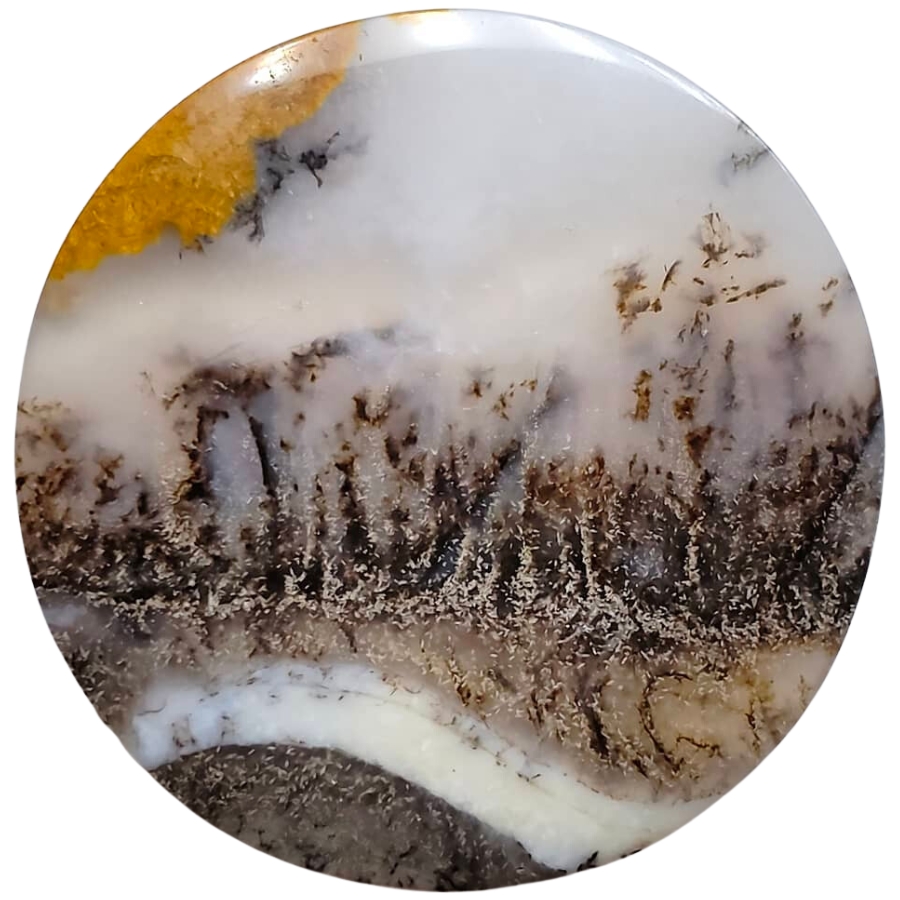
Picture agate is like a snapshot of nature captured in stone because it looks like it has pictures or scenes right inside it.
These “pictures” are actually natural patterns that resemble landscapes, mountains, trees, or even skies. They are usually in different shades of brown, white, and gray against a more translucent background.
The different patterns in picture agate or what’s also called scenic agate are made by various minerals in the water filled with silica that forms it.
If you’re thinking, “What is picture agate worth?“, its value comes from how distinct, clear, and detailed the natural “pictures” are.
Turritella Agate

Turritella agate is not your typical agate because it’s full of fossilized snail shells! The shells belong to a creature called Turritella, a type of sea snail.
These shells are tightly packed and create a pattern that looks like a bunch of tiny, swirling towers. The background of the agate is usually a dark, earthy color, which makes the white or cream-colored snail shells really pop.
Over millions of years, these snail shells got buried in sediment and eventually became fossilized. As time went on, silica-rich water flowed through the sediment, turning it into the agate we see today.
The value of turritella agate comes from its unique blend of geology and history. More than a pretty stone, it’s a piece of ancient life preserved in rock.
Fairburn Agate
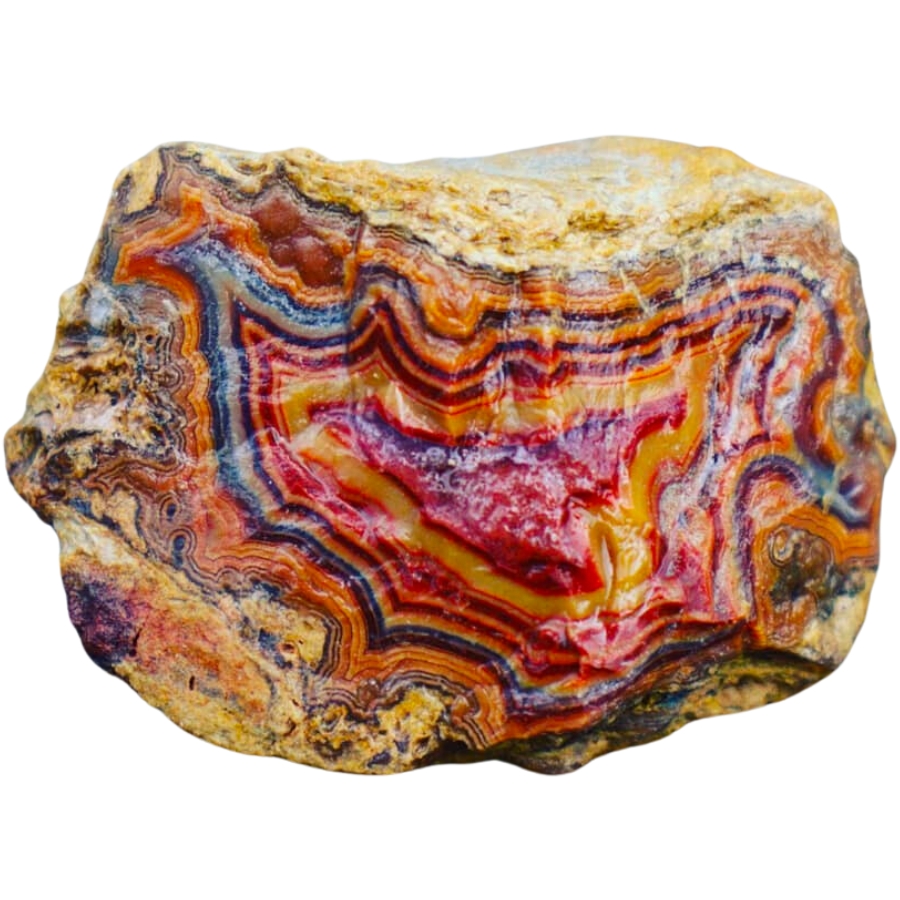
Known for its intricate patterns and bold colors, Fairburn agate is another fascinating type of agate. It usually has bands and swirls of different colors like red, yellow, orange, brown, and sometimes even pink or purple.
What’s special about these patterns is they often look like they’re in layers, creating a 3D effect. It’s like looking at a landscape made of stone.
It’s named after a place called Fairburn in South Dakota. This gives a clue about where it was first discovered.
People value Fairburn agate for the skill it takes to cut and polish it, which makes the patterns and colors really stand out.
Sagenite Agate
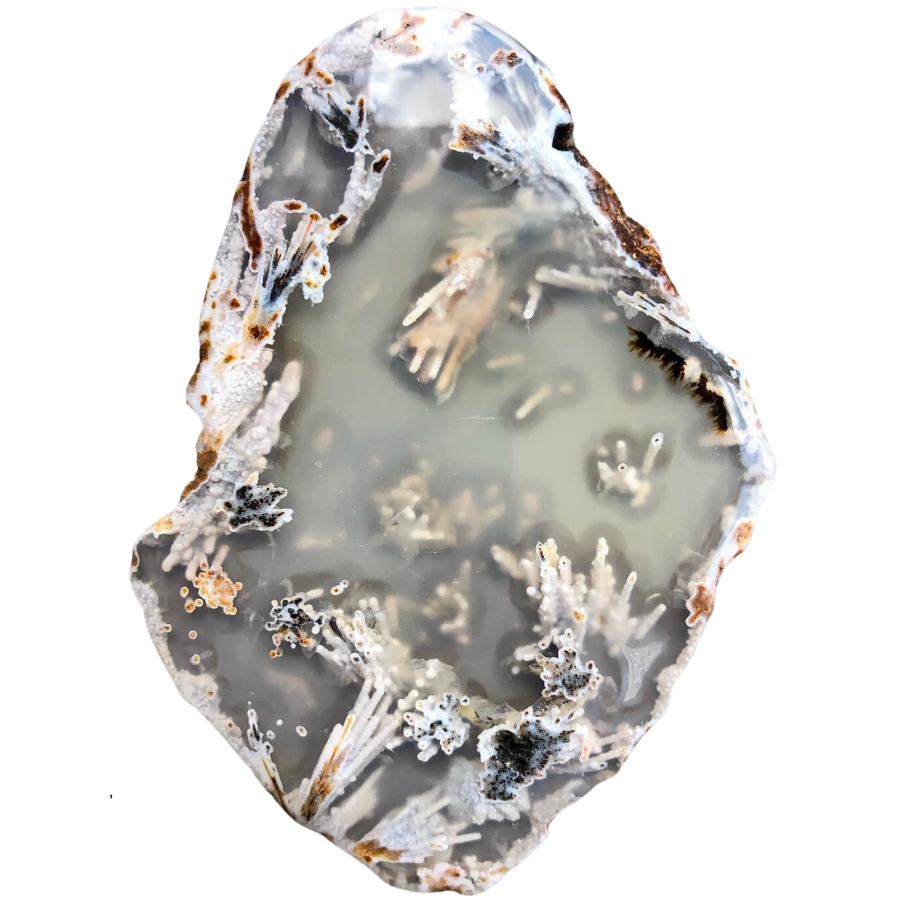
Sagenite agate has needle-like inclusions that look like tiny sprays of crystals inside it. They can be gold, silver, black, or even green, and they spread out in all directions, creating an amazing pattern.
The base of the agate is usually translucent, which lets you see these intricate needle patterns clearly.
These patterns are actually other minerals, like rutile or goethite, that get trapped inside the forming agate. These minerals grow in a crystal shape, looking like needles or hair.
Sagenite agate is often used in jewelry and other decorative items, with some people thinking that its needle patterns look like fireworks or starbursts.
Tree Agate
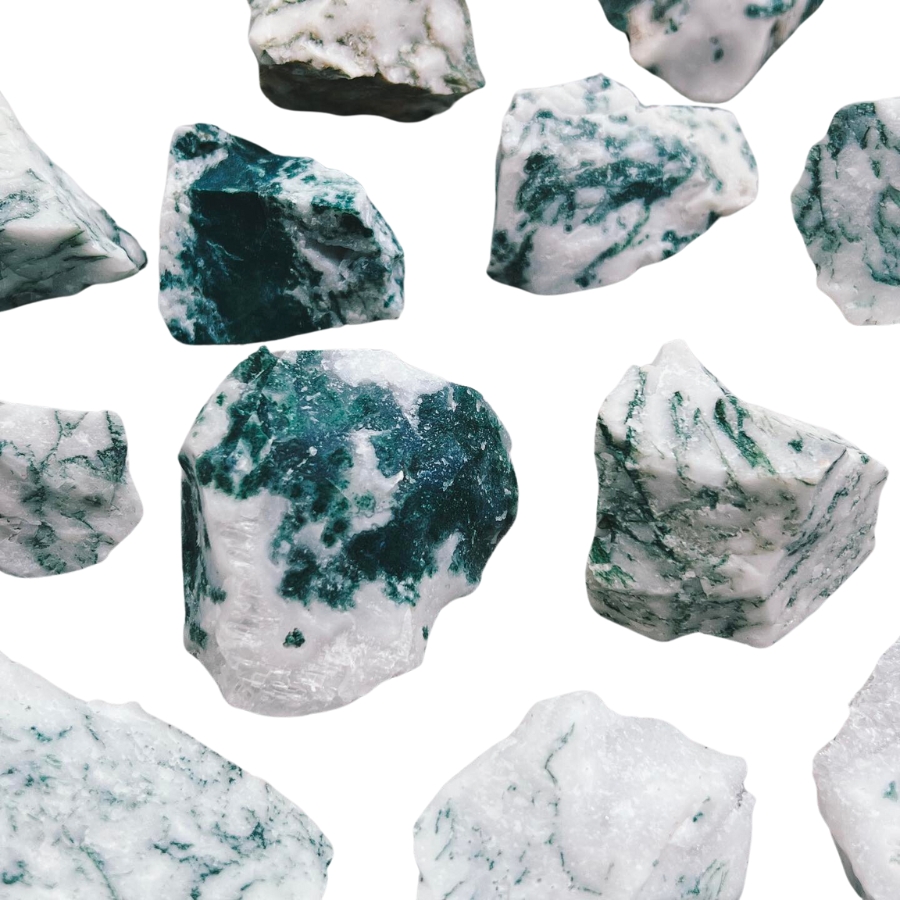
Tree agate, as its name suggests, looks like it’s got tiny trees or branches inside it. These tree-like patterns are usually green and spread out against a white or light gray background.
The green patterns aren’t actual trees, though. They’re made of minerals like chlorite or manganese.
Each piece of tree agate is different. You won’t find two that are exactly the same. It’s valued for its looks and it’s often used in jewelry and decorations.
The key factors in our recommendations are:
- The deep experience and understanding of our team about the area
- Recommendations from local groups and clubs
- How easy it is to get the a particular location
- Safety and potential hazards when collecting
- Weighing private and public locations
- The ability for both experienced and novice agate enthusiasts to find great samples
With these factors in mind we’ve been able to put together a fantastic list that just about anyone can use!
Kids. Beginners. Pros. Doesn’t matter. This book has become the go-to because it works for everyone.
Magy put it bluntly: “Identify rocks, crystals and minerals is so easy now!”
That’s not by accident, the photos are crisp, the callouts are simple, and the design is rugged enough to throw in a backpack without worrying. Whether it’s your first geode or your hundredth, this guide keeps the fun part simple: finding more treasures.
The Best Spots To Find Agates in Rhode Island
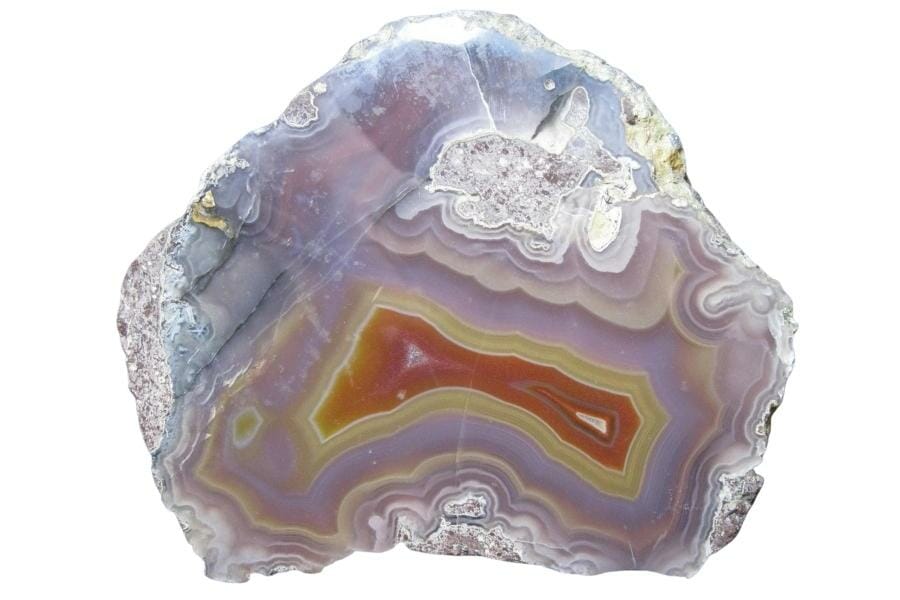
Rhode Island is a great place to find agates because of its rough terrain. There are many excellent locations where you can find gems in Rhode Island, but not all contain agates. We’ll show you where to start looking for them!
Always Confirm Access and Collection Rules!
Before heading out to any of the locations on our list you need to confirm access requirements and collection rules for both public and private locations directly with the location. We haven’t personally verified every location and the access requirements and collection rules often change without notice.
Many of the locations we mention will not allow collecting but are still great places for those who love to find beautiful rocks and minerals in the wild without keeping them. We also can’t guarantee you will find anything in these locations since they are constantly changing.
Always get updated information directly from the source ahead of time to ensure responsible rockhounding. If you want even more current options it’s always a good idea to contact local rock and mineral clubs and groups
Calumet Hill

Calumet Hill is a lesser-known gem in Rhode Island that is a geological treasure trove for people who love agates.
Agates and other minerals, like quartz, were formed by geological processes in this area long ago, away from the main tourist routes.
Glaciers moving during the last ice age formed the hill’s rocky surface. It has a variety of stones, sediments, and maybe even beautiful agates hidden below.
The site is more than just the stones; it’s also a beautiful place with many plants that make for a peaceful day of exploring. Whether you’re a beginner rockhound or a seasoned geologist, Calumet Hill is exciting because you might find agates in the glacial deposits.
Where we found agates at Calumet Hill
For people looking for agate, Calumet Hill stands out because it has gravel deposits and sedimentary formations that are left over from glacial erratics and meltwater channels.
Glaciers often bring agates here from far away because the conditions are perfect for trapping and making them.
Dyer Island
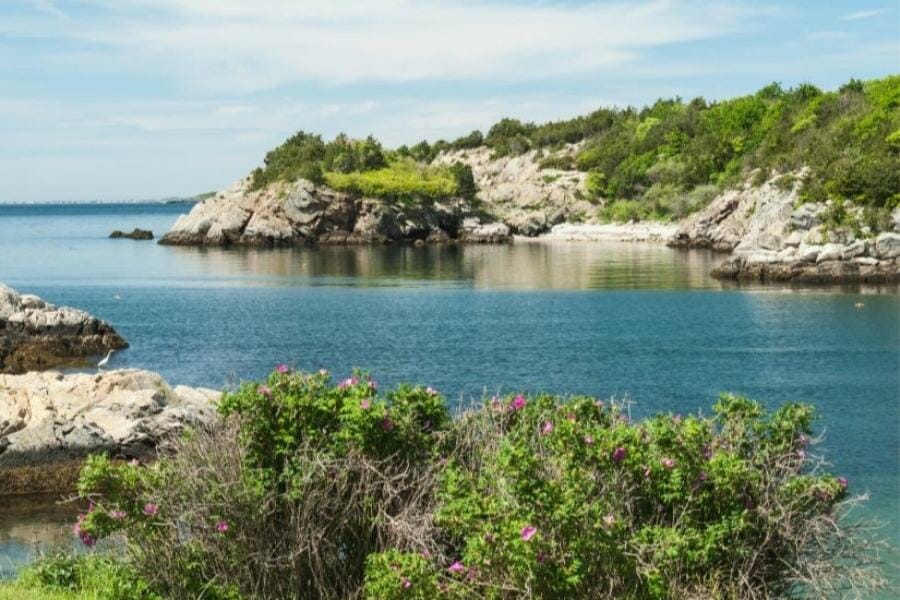
Even though it’s not well known, Rhode Island’s Dyer Island could be a fun place for people who like agates and geology.
This small piece of land off the state’s coast is part of a region shaped by thousands of years of geological activity, including the powerful glacial periods. It’s an interesting but challenging place to look for minerals.
The island’s main draw is its wide range of geological features. Since it’s near the water, water and wind have affected it, which can reveal geological treasures that were thought to be hidden.
Dyer Island may not be a well-known place to find agates, but its unique landscape makes it fun to explore and there’s a chance of finding something unexpectedly geological.
This makes it a worthwhile adventure for people interested in nature’s mysteries.
Where we found agates at Dyer Island
Larger rocks can be worn down by the waves over time, revealing agates that are hidden inside. Glaciers may have brought agates to the island along with other rocks.
Mount Hope Bay

Mount Hope Bay spans the border between Rhode Island and Massachusetts. It’s a beautiful place to look for geological wonders like agates.
With its long maritime history, this tidal estuary is more than just a beautiful place to relax; it’s also a window into how rocks formed in the past.
Rockhounds love Mount Hope Bay because glaciers formed it in the past. During the Ice Age, glaciers scraped and collected rocks and minerals from the areas they went through, possibly including agates.
They dumped these rocks and minerals in the bay area as they melted. Over time, the water currents have also affected these stones by rolling and smoothing them, sometimes revealing what was hidden beneath.
Here, looking for agates isn’t so much about being sure of a find but more about the thrill of discovering a beautiful natural setting.
Where we found agates at Mount Hope Bay
The bay’s shoreline comprises different rocks and sediments, some of which may be agates. It was formed by the rise and fall of glaciers.
Narragansett Bay

Rhode Island’s geological crown jewel is Narragansett Bay, a large bay filled with islands. With its rich history and abundant sea life, this bay is more than just a pretty place to look at the scenery.
It’s also a haven for collectors looking for rare items like agates. Its long shoreline, shaped by glaciers in the past, is a mosaic of different rocks and sediments, which may contain valuable agates.
Glaciers that used to cover this area weren’t just vast sheets of ice; they were like natural conveyor belts that brought rocks and minerals from far away.
As these glaciers melted, they left the bay with many geological treasures, and agates could be one of them.
Where we found agates at Narragansett Bay
The state’s glacial history means that rocks, including agates, could have been transported by glaciers from other areas and deposited in local riverbeds and coastlines.
Pawtuxet River
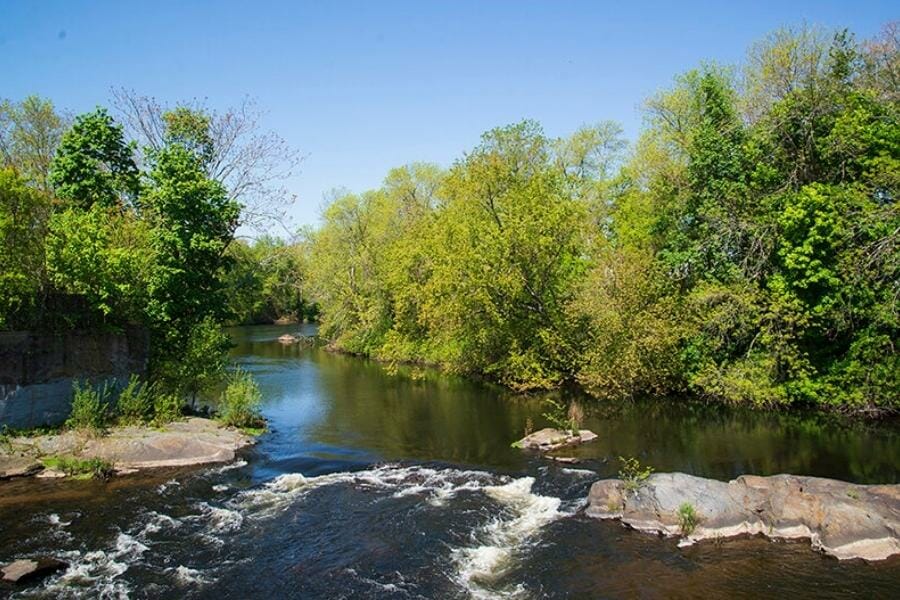
The Pawtuxet River runs through the middle of Rhode Island. It’s an important waterway and a possible paradise for rockhounds.
They were formed by years of water flow and glacial activity in the past. This river, its tributaries, and the landscapes around it make it a peaceful yet exciting place to look for geological treasures in nature.
Agates are formed in rocks that were created by volcanoes or metamorphic rocks. They are often moved long distances by water or glacial movements, which the history of the Pawtuxet River suggests may have helped them get there.
Even though the Pawtuxet isn’t known for agate finds, its varied geology suggests it could be possible.
Where we found agates at Pawtuxet River
Its banks and riverbed are home to many kinds of stones and minerals, possibly even hard-to-find agates.
The river’s banks and shallow areas might be your best bet, especially after heavy rains or when new stones are exposed in times of low water.
Other Great Places To Find Agates in Rhode Island
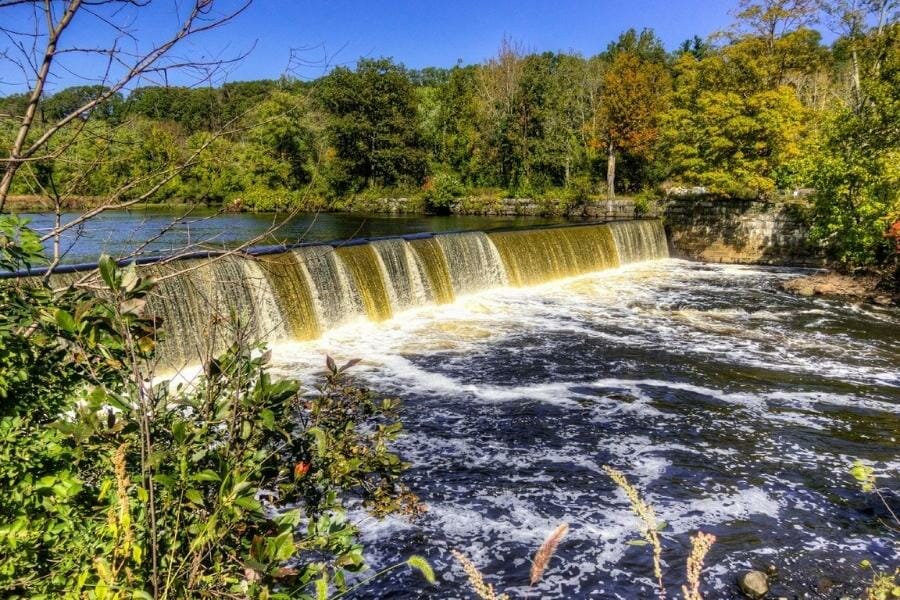
Rockhounds can find remarkable rocks in all of Rhode Island’s different landscapes. Even though we already told you about some great places to visit, here are some more ideas to help you do well!
This county-by-county guide will help you find the state’s best-kept secrets.
Our recommendations by county
| County | Location |
| Providence | Cumberland Hill area quarries |
| Providence | Diamond Hill area quarries |
| Providence | Limerock, Conklin Lime Company Quarry |
| Providence | Pawtuxet area beach gravels |
Additional areas you can find agates
You can find agates in the places listed below. Rhode Island is vast, so let us help you find these.
Beaches
For agate collectors, beaches are great places to go because the constant rise and fall of the tides creates a naturally curated collection of rocks and minerals. Agates are formed in volcanic rock or old lava flows.
They usually get to the coast by rivers that cut through volcanic deposits or by erosion of cliffs along the shore that are made up of rocks that contain agates. If these agates get to the ocean, they will naturally tumble.
The ocean’s constant movement rounds and smooths these stones until they end up on beaches in a better condition than you might find in the middle of the land.
Quarries
Agate collectors love quarries because they reveal geological history layers normally buried deep below the earth’s surface.
When mining industrial minerals, these large excavations make it possible to reach agate-bearing layers that would not be reachable any other way.
Agates are known to form in the cracks of volcanic rocks or old lava flows, and they could be hidden inside these layers, waiting to be found.
As a collector, you can focus your exploration in quarries, where the shaking of the earth during industrial excavation can reveal agates and other geological treasures.
Streams and creeks
Streams and creeks are great places for agate collectors because they are natural ways for these stones to get to other places.
Where agates come from is volcanic areas, and waterways carry these geological treasures from where they were found to places that geology fans can easily reach.
Agates’ journey starts when erosion breaks them free from their volcanic hosts. Streams and creeks then carry them long distances, sometimes very far.
When it rains a lot, the water level rises, which stirs up the stream beds and may reveal new species. Low-water times are also good because they let you see more of the streambed.
Common Agate-Hunting Questions

Most people who go to Rhode Island to look for agates ask this.
Is it illegal to collect agate in Rhode Island?
In Rhode Island, no laws say you can’t collect agates, but people who do so must follow specific rules to ensure they do it morally and legally.
The Best Places To Buy Agates In Rhode Island
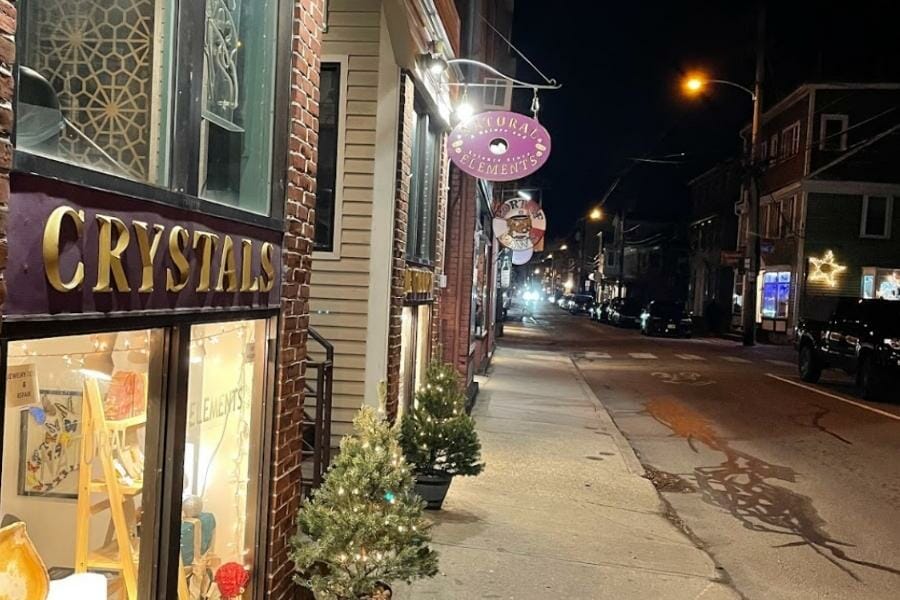
Some people don’t like going outside in the heat to look for agates. You might only need one to give as a gift or get for yourself. These rock shops in Rhode Island sell agates that can be found in the state:
- Apple Valley Minerals – 7 Homestead Ave, Smithfield, RI 02917, United States
- Natural Elements – 435 Thames St, Newport, RI 02840, United States
- Natures the Rock Shop – 416 Metacom Ave, Bristol, RI 02809, United States
- Ruby Rocks LLC – 145A Danielson Pike, Foster, RI 02825, United States
- Third Rock Emporium – 75 Main St, East Greenwich, RI 02818, United States

